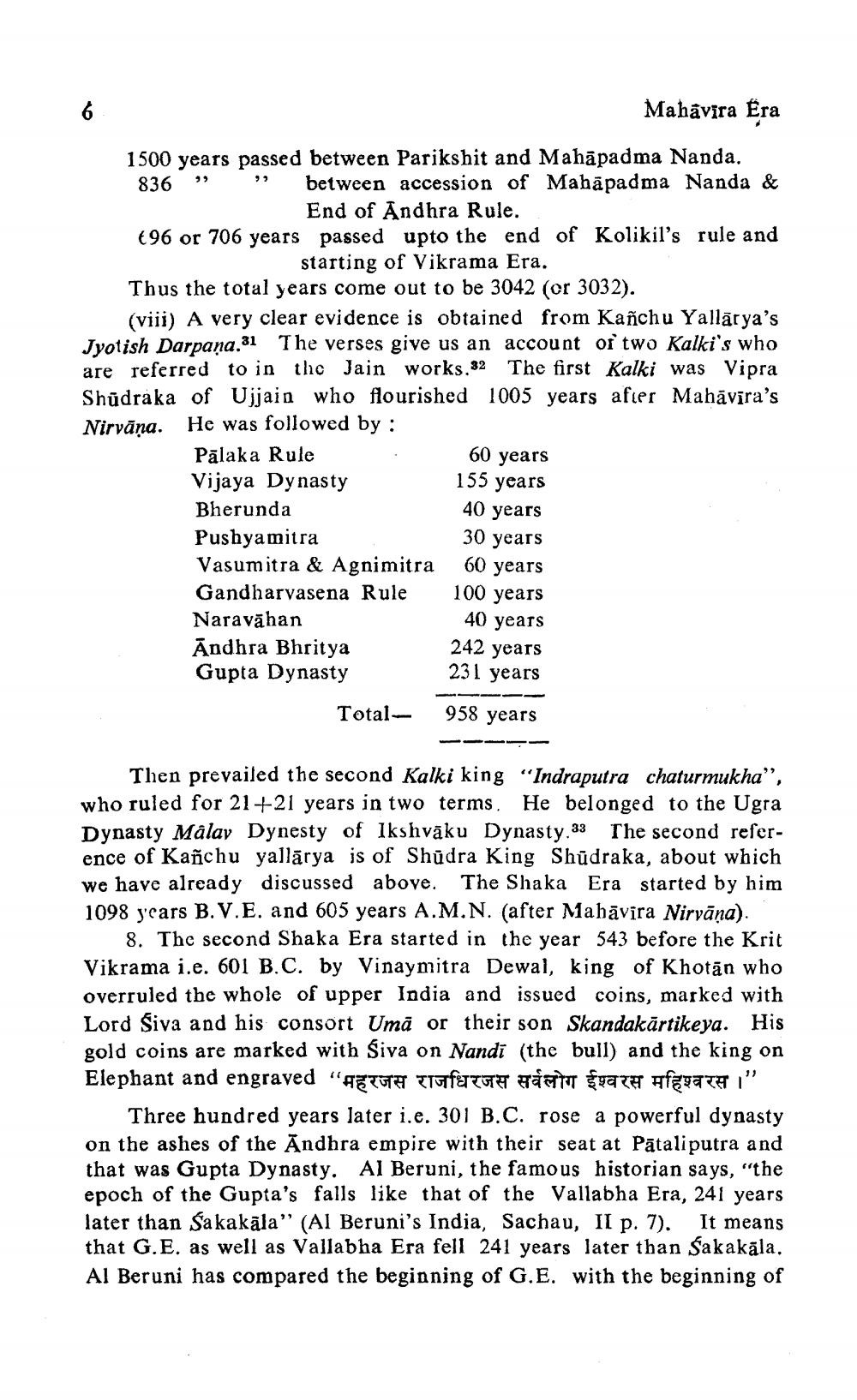________________
Mahavira Era
1500 years passed between Parikshit and Mahāpadma Nanda. 836 " "
between accession of Mahapadma Nanda &
End of Andhra Rule. €96 or 706 years passed upto the end of Kolikil's rule and
starting of Vikrama Era. Thus the total years come out to be 3042 (or 3032).
(viii) A very clear evidence is obtained from Kanchu Yallārya's Jyotish Darpana.31 The verses give us an account of two Kalki's who are referred to in the Jain works.32 The first Kalki was Vipra Shûdraka of Ujjain who flourished 1005 years after Mahāvīra's Nirvāna. He was followed by : Pālaka Rule
60 years Vijaya Dynasty
155 years Bherunda
40 years Pushyamitra
30 years Vasumitra & Agnimitra 60 years Gandharvasena Rule 100 years Naravāhan
40 years Āndhra Bhritya
242 years Gupta Dynasty
231 years
vitra
Total
958 years
Then prevailed the second Kalki king "Indraputra chaturmukha”, who ruled for 21+21 years in two terms. He belonged to the Ugra Dynasty Malay Dynesty of Ikshvāku Dynasty.33 The second reference of Kañchu yallārya is of Shüdra King Shūdraka, about which we have already discussed above. The Shaka Era started by him 1098 vears B.V.E. and 605 years A.M.N. (after Mahāvira Nirvāna).
8. The second Shaka Era started in the year 543 before the Krit Vikrama i.e. 601 B.C. by Vinaymitra Dewal, king of Khotān who overruled the whole of upper India and issued coins, marked with Lord Siva and his consort Umā or their son Skandakārtikeya. His gold coins are marked with Siva on Nandi (the bull) and the king on Elephant and engraved "ATUTE Tufcae Pato fazy fRTTA I"
Three hundred years later i.e. 301 B.C. rose a powerful dynasty on the ashes of the Andhra empire with their seat at Pataliputra and that was Gupta Dynasty. Al Beruni, the famous historian says, "the epoch of the Gupta's falls like that of the Vallabha Era, 241 years later than Sa kakāla" (AI Beruni's India, Sachau, II p. 7). It means that G.E. as well as Vallabha Era fell 241 years later than sakakāla. Al Beruni has compared the beginning of G.E. with the beginning of




